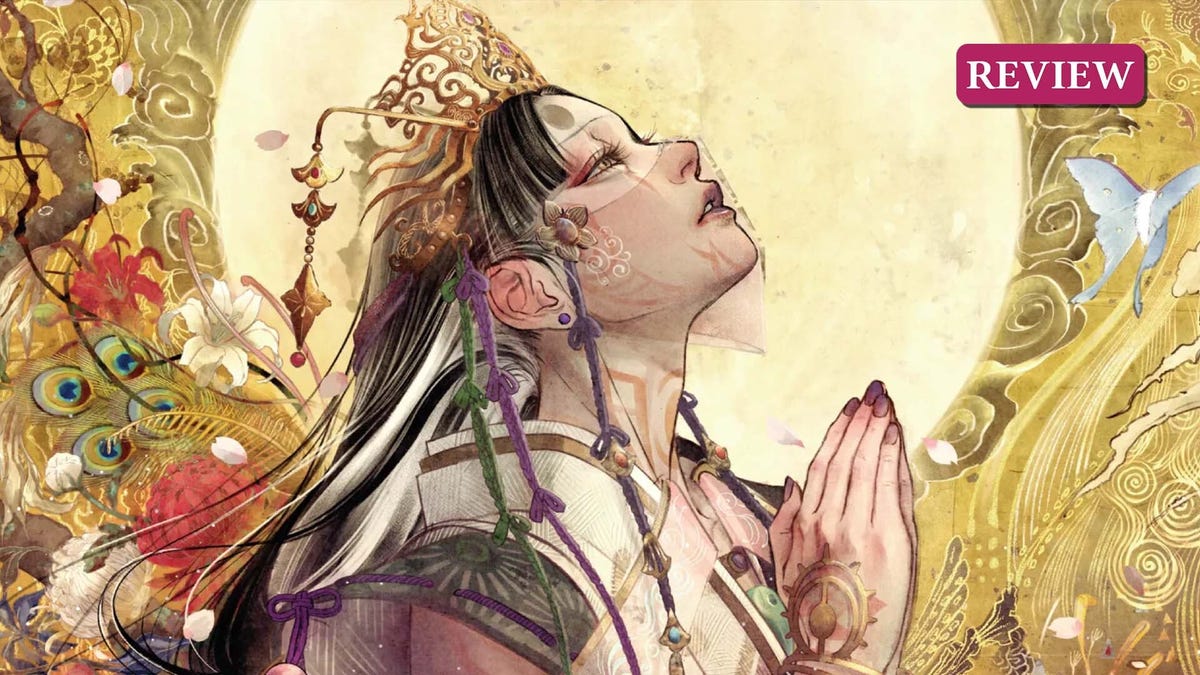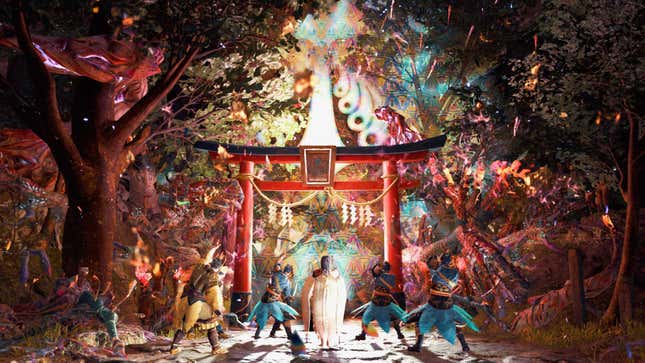Tech
Kunitsu-Gami: Path of the Goddess: The Kotaku Review

Get a maiden to the shrine. Strike down all of the demons standing in her way. Purge defilement from a mountain and restore the land to its natural harmony and splendor. That’s Kunitsu-Gami: Path of the Goddess in a nutshell, and one of my favorite things about it is how little it strays from that humble, straightforward concept. In a sea of bloated sequels and creatively bankrupt knockoffs, Path of the Goddess is a fun, focused mashup of strategic planning and action gameplay that doesn’t get lost in the details.
Made by Capcom and out on PlayStation 5, PS4, Xbox Series X/S, Xbox One, and PC on July 19, Path of the Goddess combines the third-person action-feel of a Ninja Gaiden with tower defense management for people who hate how those words sound together. Think Gears of War’s horde mode with swords instead of guns and the sensibility of the PS2 classic Okami. One moment you’re assigning roles to your allies and ordering them around the battlefield, the next your furiously spamming combos to try to fend off tanky foes who are about to murder everyone.
Buy Kunitsu-Gami: Path of the Goddess: Best Buy | Humble Bundle
Based in Japanese folklore, Path of the Goddess mixes history and myth to craft a beautiful and compelling journey that feels like playing through a series of poems. You control Soh, a masked warrior guarding the Maiden Yoshiro on her way to get rid of evil spirits called Festering Seethe that have taken over a mountain and corrupted its inhabitants. There’s almost no dialogue and hardly any story. Cutscenes are brief and few and far-between. Instead, Path of the Goddess quickly shuttles you from one level to the next, its main campaign neatly organized between escort missions, boss battles, and time spent rebuilding the places you’ve liberated from the Seethe. It feels refreshingly old-school in that regard.
Each stage begins at dawn. You run around building defenses and traps, purging the defilement from animals, plants, and villagers, and collecting translucent pink orbs left behind that serve as a key resource. These orbs are spent to carve a path forward for Yoshiro so she can slowly conduct her cleansing ritual across the map. They’re also required to upgrade villagers to various roles from melee wood cutters and long-range archers to shaman healers and tanky sumo wrestlers. Spend all the orbs on Yoshiro and you’ll be defenseless. Waste all of them on your allies and she’ll be dead in the water.
After a few minutes, night falls and the Seethe begin arriving through gates and attacking in waves. While villagers can take down small enemies no problem, bigger ones require swift attention. This is where Path of the Goddess’ action gameplay comes in. Soh has basic single-button-press combos that do decent damage, but adding a heavy attack to the end of each of them strings together a series of dancing sword attacks that you can steer but not cancel. It’s like winding up a toy ballerina and then watching it slash through hordes of enemies. It’s a small but novel innovation that makes combat feel fluid and rewarding even at its most simple and repetitive.
Path of the Goddess doesn’t stop there, though. Soh has a dodge and guard attack complete with timed-parry mechanics that add an extra level of depth. Repeated attacks will momentarily stagger an enemy but Soh’s guard can be broken, too, if it’s used too many times in a row, leaving him frozen and vulnerable for a few seconds. Soh also has a special meter that slowly fills up, letting him unleash various ultimate attacks that can turn the tide of a fight in key moments.
It’s a tight combat loop that slowly gets more interesting over the course of the game as you unlock new abilities and find items that grant you special perks. A small skill wheel lets you invest in a couple dozen upgrades like a higher-risk, higher-reward combat stance as well as charging attacks that break more of an enemy’s stagger meter. The result is moment-to-moment combat that makes you feel strong and agile but not overpowered, built on enough customizable elements that you feel like you have some meaningful options for how to strategize around each new encounter.
The other big part of that strategy is your villagers. Every time you defeat a boss you earn a new mask that represents a different role you can assign to the villagers helping you on your journey. You start from scratch each mission, enrolling whoever you happen to find along the road in your demon-hunting crusade. Basic roles require fewer orbs but aren’t as strong. Ones like the sumo who aggro enemies or the cannoneer which has a slow rate of fire but does a lot of damage cost more.
All of them have different strengths, weaknesses, and use cases, and one of the many things Path of the Goddess gets right is not making any of them feel obsolete or redundant. My favorite by far, though, is the sorcerer. It charges up a spell that gives you a map-wide super you can use instantly if they’re still alive. It feels like getting a nuke killstreak in Call of Duty and it saved my ass so many times.
Boss fights, for the most part, prioritize enemy designs and animations over unique mechanics. Most of them look incredible, even if gameplay-wise they weren’t the overall highlight of the game for me. Few things feel better in Path of the Goddess than knocking a giant Seethe on its back and then calling in your troops to unleash hell. I’m still thinking about the giant poison toad my cannoneers all blasted at once with giant fireworks, killing it even while I was still incapacitated.

There’s only one thing dragging Path of the Goddess down and it’s the settlement rebuilding section. After liberating a village you can go back and explore it free of enemies, which mostly means walking around to various sections and assigning workers to fix a house, bridge, gate, or shrine that is on a timer to complete after a set number of battles. There’s no real need to prioritize one set of repairs over another and the most helpful rewards are for finishing every repair in a particular map location, meaning you’re going to have to get it all done at some point anyway. Thus every cool battle is followed by an unwieldy and perfunctory upkeep phase that would have been easier just to manage from the main map menu.
It’s an undercooked system as far as strategy games go, one that stands out in part because of how well-balanced and thoughtfully crafted so much of the rest of the game is. One thing I especially love about Path of the Goddess is the UI, which feels folded into the very fabric of the experience. Soh’s health is shown via a scroll next to his body, the upgrade menu for his abilities is a sword hilt where you swap out the tassel and runes, and the save screen is a long sheet of folded paper that gets stamped.
They are the small bits of polish that make an already great game even better, and they remind me of the PS2 era when more games felt like they were trying to explore their own path rather than follow in the footsteps of what everyone else had already done. It’s that spirit of authenticity and unwavering commitment to a distinctive vision that makes Path of the Goddess so refreshing right now, especially at this level of budget, production, and quality. When so many games feel like they could have been made by anybody for nobody, Path of the Goddess feels like something unique made for people who never knew how much they’d love it. Creative swings like that don’t always work out. Path of the Goddess is one that definitely does.
Buy Kunitsu-Gami: Path of the Goddess: Best Buy | Humble Bundle
.






![Here’s everything new in Android 16 Developer Preview 2 [Gallery] Here’s everything new in Android 16 Developer Preview 2 [Gallery]](https://i0.wp.com/9to5google.com/wp-content/uploads/sites/4/2024/12/Android-16-DP2-logo-2.jpg?resize=1200%2C628&quality=82&strip=all&ssl=1)



